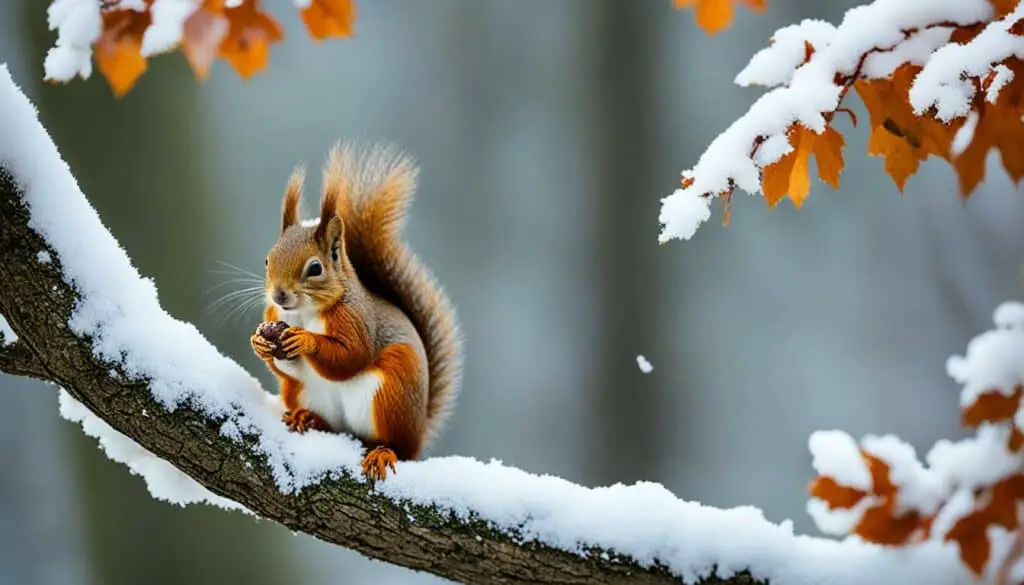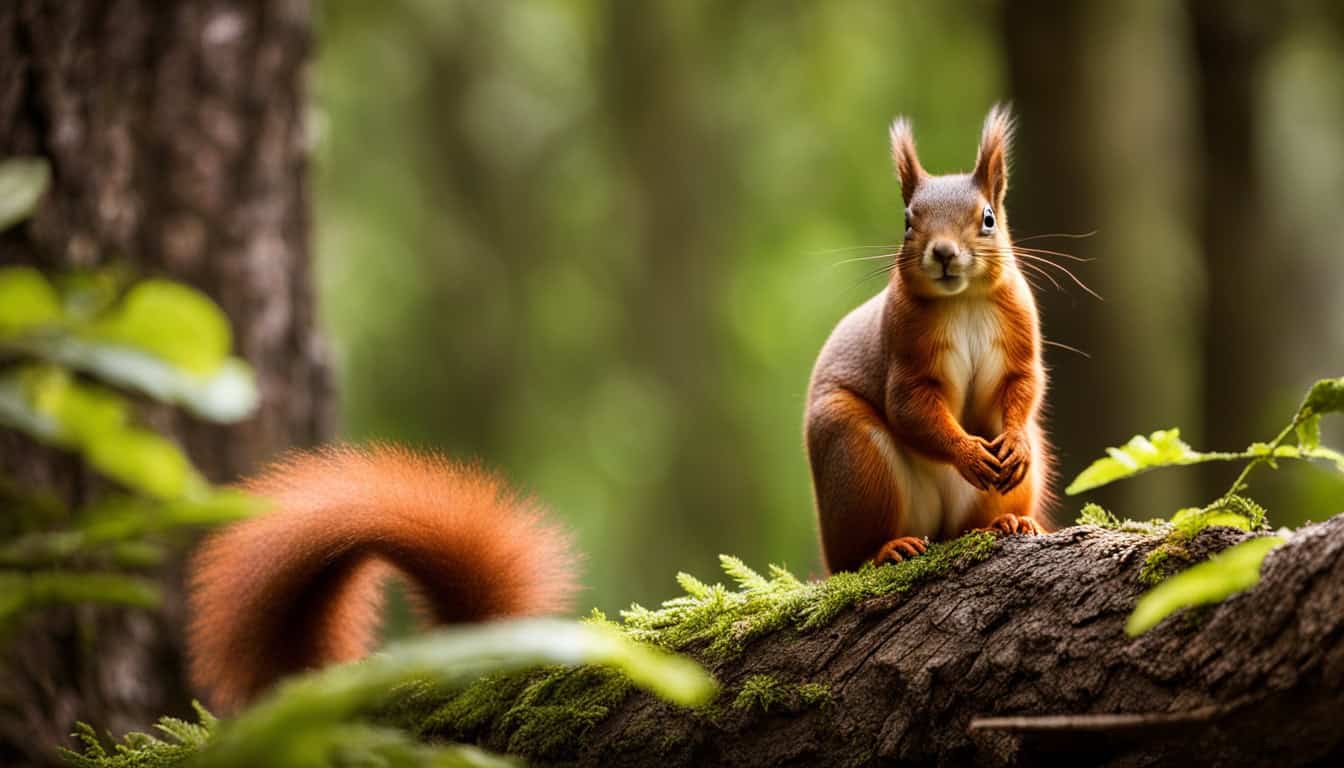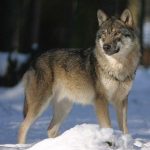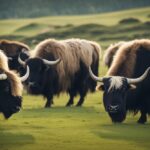Have you ever thought about how far the American red squirrel travels? It’s all for finding the best conifer cone.
The American red squirrel is quite unique. It’s smaller than most with reddish fur and a white belly. These critters are super protective of their territories all year. They mainly eat conifer cone seeds. You can find them in the forests of the U.S. and Canada, but not in the south-west. Their cousin lives there instead. Recently, they’ve started living in hardwood forests too. This shows how well they can adapt.
Learning about the American red squirrel’s range tells us about how they adapt and their special living places. Let’s explore more about where they live and how they spread out. It’s an interesting world to discover.
Introduction to the American Red Squirrel
The American red squirrel is a key character in North American woods. You can easily spot it by its size and bold color. It measures 28 to 35 cm long and likes living in places with both coniferous and hardwood trees. This preference makes its home across many areas, showing up in various ecological settings.
A unique thing about these squirrels is their claim over a spot. They announce their presence loudly and energetically. They love the daytime, being most active when the sun is up. During these hours, they can be seen and heard exploring and conversing.
The American red squirrel is a picky eater, mainly feeding on conifer cone seeds. However, they also munch on many other things the woods offer. Their varied diet adds to their success in many forest types. It plays a big role in their widespread reach and dominance over territory.
American Red Squirrel Habitat
The American red squirrel depends on its habitat to stay alive and move around. They need a certain type of place to live in, so they can do well every season.
Preferred Forest Types
American red squirrels like to live in forests with lots of spruce, fir, and cedar trees. These trees grow seed cones that are the main part of the squirrels’ diets. The forests are not just a food source but also where the squirrels feel safest doing their daily tasks.
Nesting Locations
Squirrel nests are very important in their habitat. Squirrels make their homes in tree branches or any big holes they find. They gather twigs, moss, and leaves to make sure their nests are warm and hidden. This keeps them safe, especially when it’s very cold.
These squirrels are smart about using their space. They hide food in different spots for later, like burying cones to eat in the winter. This smart way of storing food shows how well they fit in their environment.
A map shows where you can find the American red squirrel in North America. It helps experts see which forests are best for the squirrels and where they like to make their homes. Knowing all of this helps with keeping their homes safe for them.
| Forest Type | Nesting Materials | Food Caching |
|---|---|---|
| Spruce | Twigs, Moss, Leaves | Burying Green Spruce Cones |
| Fir | Twigs, Moss, Leaves | Securing Seed Cones |
| Cedar | Twigs, Moss, Leaves | Varied Food Supplies |
American Red Squirrel Distribution
The American red squirrel distribution spans across many places. It is found in Canada, the bottom half of Alaska, and the north of the eastern U.S. This shows how well they can live in different areas.
Geographical Spread
In Canada’s big forests, the American red squirrel starts its journey south. It goes into the Rocky and Appalachian Mountains. They live where coniferous forests are plenty, which is key for their food. Also, they head south into parts of the northern eastern U.S.
Factors Influencing Distribution
Many things affect where the American red squirrel lives. Having lots of coniferous forests is very important. This is because they need the seeds from conifer cones to eat. Cold weather is their favorite, which is why they do well in these places. They might also move or stay away from places where other squirrels live, like the Douglas squirrel and southwestern red squirrel. Despite it all, they have shown they can find new homes, like in Newfoundland, if the place is right for them.
| Region | Key Factors | Competitors |
|---|---|---|
| Canada | Abundant coniferous forests | Minimal competition |
| Southern Alaska | Cool climate | Minimal competition |
| Rocky Mountains | Coniferous seeds availability | Douglas squirrel |
| Northern Eastern United States | Mixed forests | Southwestern red squirrel |
American Red Squirrel Territory
The American red squirrel home range is very important to them. It’s usually from half an acre to six acres. They build many nests in this space. They use loud noises to tell others it’s their area and keep rivals away.
They create big middens, which are food storage areas. These aren’t just for food; they also show who’s boss in the area. The squirrels take care of them and protect them well. This shows how much they value their space.
They know their way around their territory really well. This helps them find food and safe places to live. By making sure others know where their spot is, they avoid fights. This keeps their food and home safe.
| Characteristic | Description |
|---|---|
| Home Range Size | One-half to six acres |
| Key Features | Large middens, vocalizations |
| Nesting Sites | Multiple within each territory |
Historical Distribution and Range Expansion
The American red squirrel has a fascinating story of how it spread across North America. It has done amazingly well in adjusting to different environments. This led to big changes over time in where it chooses to live.
Original Native Range
Originally, the American red squirrel was mainly near Hudson Bay, Canada. It lived in the coniferous forests of North America. These forests were full of spruce and pine trees, which had lots of seeds. This meant plenty of food and good places to live.
Current Expansion Trends
Today, we see the squirrel making surprising adjustments. It’s moving into hardwood forests more and more. This change in preference for living areas shows how flexible and successful the squirrel has become.
The ability to choose different places to live is a big sign of strength for this squirrel. It also shows how its needs in nature can change. This information is vital for making sure they have good places to live in the future. Conservation efforts can benefit a lot from understanding these changes.
Seasonal Range Variations
Seasonal behavior shows us how American red squirrels handle their environment. They change their activity levels based on food saving habits and when they have babies. It’s a way for them to survive across the year.

In fall, these squirrels start hiding food, like green cones from spruce trees. This is their way to prepare for winter when food is hard to find. By doing this, they make sure they can eat enough even when it’s really cold.
Having babies is a big deal for them in spring and summer. These warm times are best for raising their young. So, they make babies and take good care of them, making sure they continue their squirrel family.
They adjust where they look for food and live, all to do better at surviving and having babies. Knowing this helps us understand how clever they are in handling different seasons.
| Season | Behavior | Food Storage | Reproductive Cycles |
|---|---|---|---|
| Winter | Reduced Activity | Reliance on Cached Food | Minimal Reproductive Activity |
| Spring | Increased Foraging | Starting New Food Stores | Peak Mating Season |
| Summer | Active Foraging | Maintaining Food Stores | Raising Offspring |
| Fall | Intensive Caching | Building Winter Reserves | Preparation for Reduced Reproductive Activity |
American Red Squirrel Range Map
It’s crucial to know where the American red squirrel lives. This info helps us understand their environment and how to protect it. Range maps show us where they are in North American forests.
Visual Representation
Range maps give a clear picture of where the American red squirrel lives. They show the various forests they call home, from Canada’s thick coniferous forests to the mixed hardwoods in the US. These maps also show their native and extended territories. This helps a lot in studying their ecology.
Interpreting Range Maps
Understanding range maps requires looking at their detailed info. These maps are key in seeing where the squirrels are now and how their numbers have changed. They help figure out areas that need protection, aiding red squirrel habitat preservation. Studying these maps offers important ecological insights for smart environmental choices.
American Red Squirrel Location by States
The American red squirrel lives in many U.S. states, showing it can live in different places. You can find them from the north to some Midwest and East Coast states. They live in forests with coniferous trees and a mix of other trees.
In Alaska and the northern Midwest, you see a lot of red squirrels. This is because they have plenty of coniferous trees and good places to make nests. They really enjoy living in these areas because they have everything they need.
States like Maine and Pennsylvania have many American red squirrels too. They have the right kind of forests and enough food for the squirrels. This means the squirrels can do things like protect their space and hide food for later. Looking at where these squirrels live helps us understand what they need to survive and where they like to be.
FAQ
What is the range of the American red squirrel?
The American red squirrel is found across much of Canada and the northern U.S. This includes areas like the Appalachian and Rocky Mountains. They also live in the southern half of Alaska.
Where is the American red squirrel habitat?
American red squirrels live in coniferous and mixed forests. These forests have spruce, fir, and cedar trees. They’re also seen in hardwood forests.
What is the American red squirrel’s native range?
Originally, the American red squirrel was found around Hudson Bay in Canada. This area was full of coniferous forests.
What is the distribution of the American red squirrel?
You can find American red squirrels in the U.S. and Canada. They live wherever there are conifers. In the southwest U.S., however, they’re replaced by the southwestern red squirrel.
What territory size do American red squirrels maintain?
They keep territories from one-half to six acres. Inside, they have many nests. They use special calls and leave big piles of food to mark their areas.
What types of forests do American red squirrels prefer?
They like forests with trees like spruce, fir, and cedar. But they also do well in hardwood forests. This has helped them widen their living areas.
Where do American red squirrels build their nests?
They make nests in trees. Sometimes, they use holes in trees, too. These nests are important for having babies and keeping food safe.
What factors influence the distribution of the American red squirrel?
Things like the amount of coniferous forests and the weather play big roles. So does the number of other squirrels, like the Douglas and southern red squirrels.
How have American red squirrels expanded their range over time?
They’ve moved into new areas, like hardwood forests. This is a change from only living in coniferous forests. Some have also started thriving in places like Newfoundland.
How does the American red squirrel’s behavior change seasonally?
Their behavior changes a lot with the seasons. They gather food for winter and have babies in spring and summer. They move around and adjust what they eat to survive and grow their families.
How is the American red squirrel’s range represented visually?
Maps show where the American red squirrel lives in North America. They show the type of forests the squirrels are in. Understanding this is key to protecting their homes.
How should one interpret range maps of the American red squirrel?
Understanding these maps means looking at where they are and what affects their homes. This helps figure out how to keep their living spaces safe for them.
What states in the U.S. have a notable presence of American red squirrels?
American red squirrels are everywhere in the U.S. This shows they do well in different places. It’s a sign of their strong ability to live in various landscapes.







